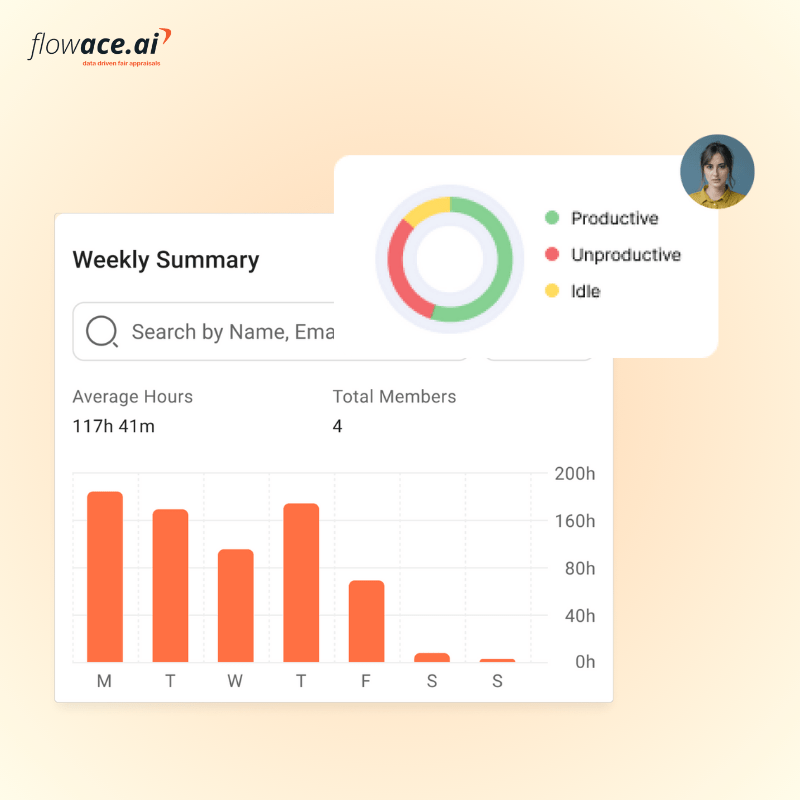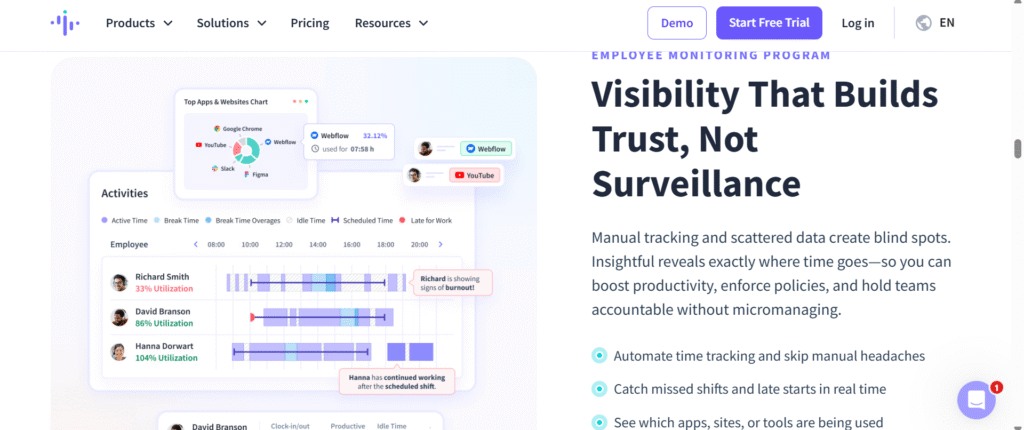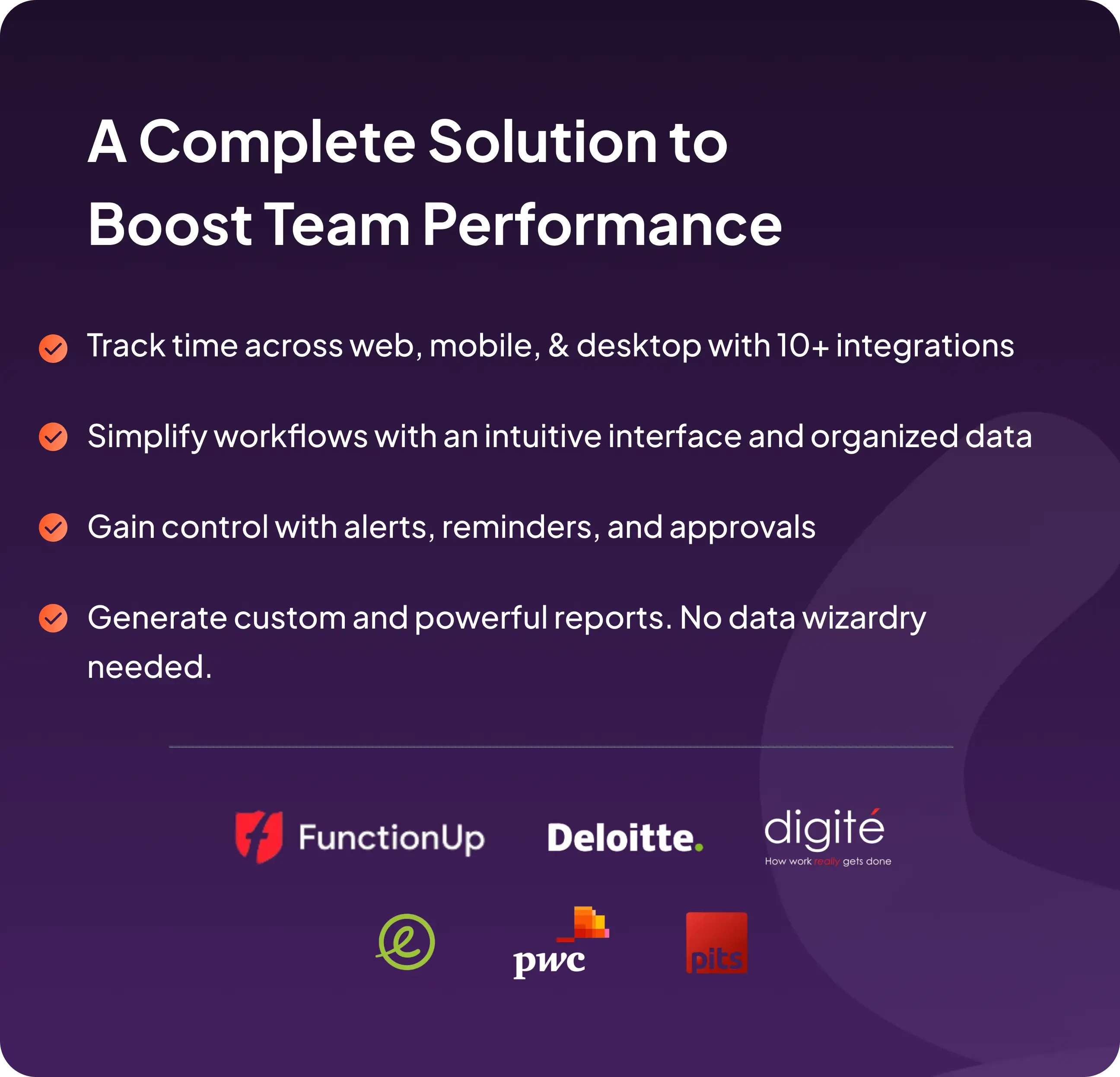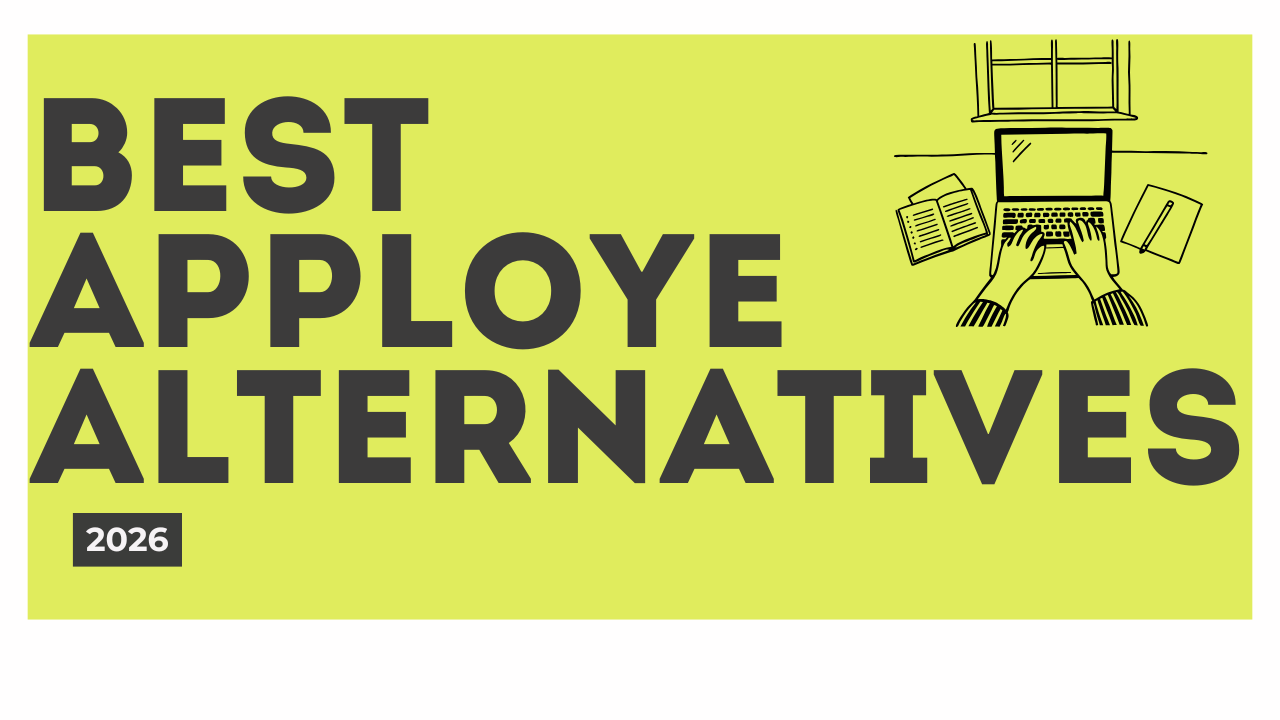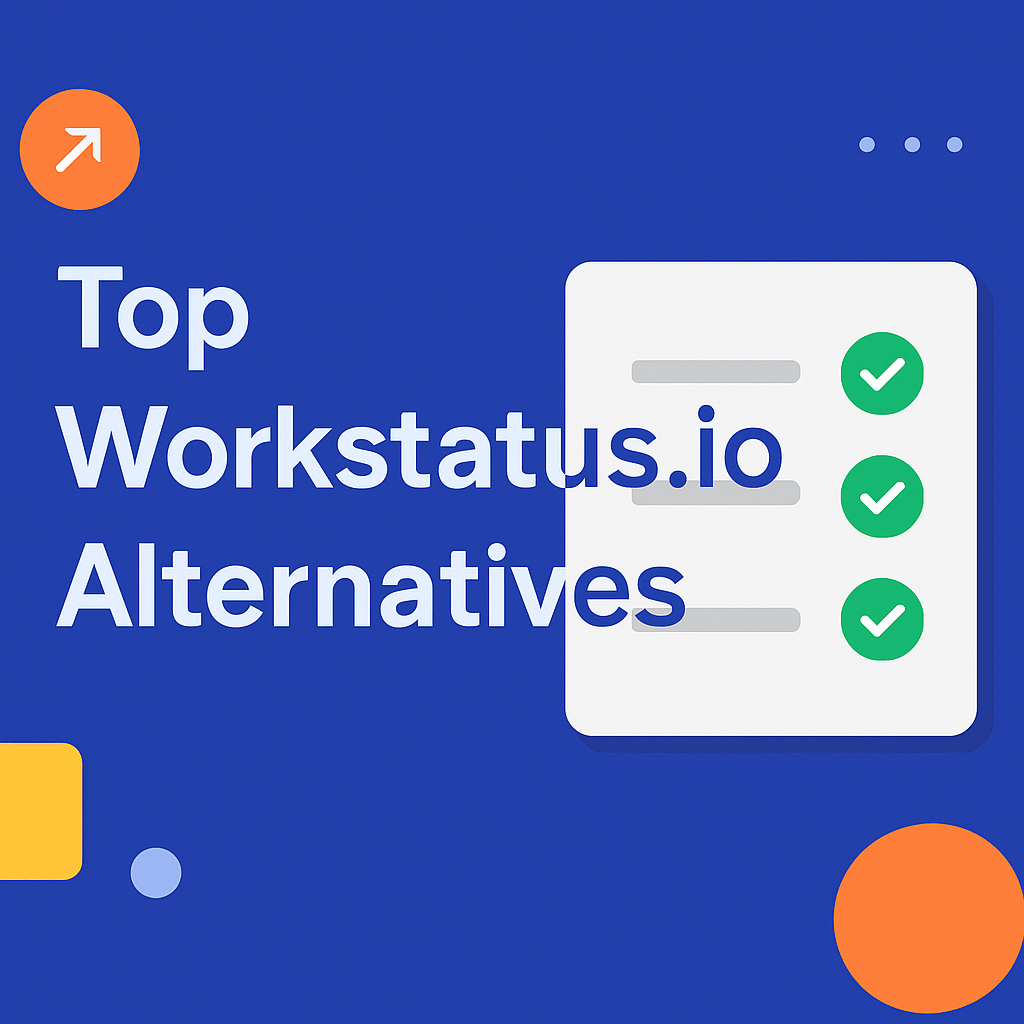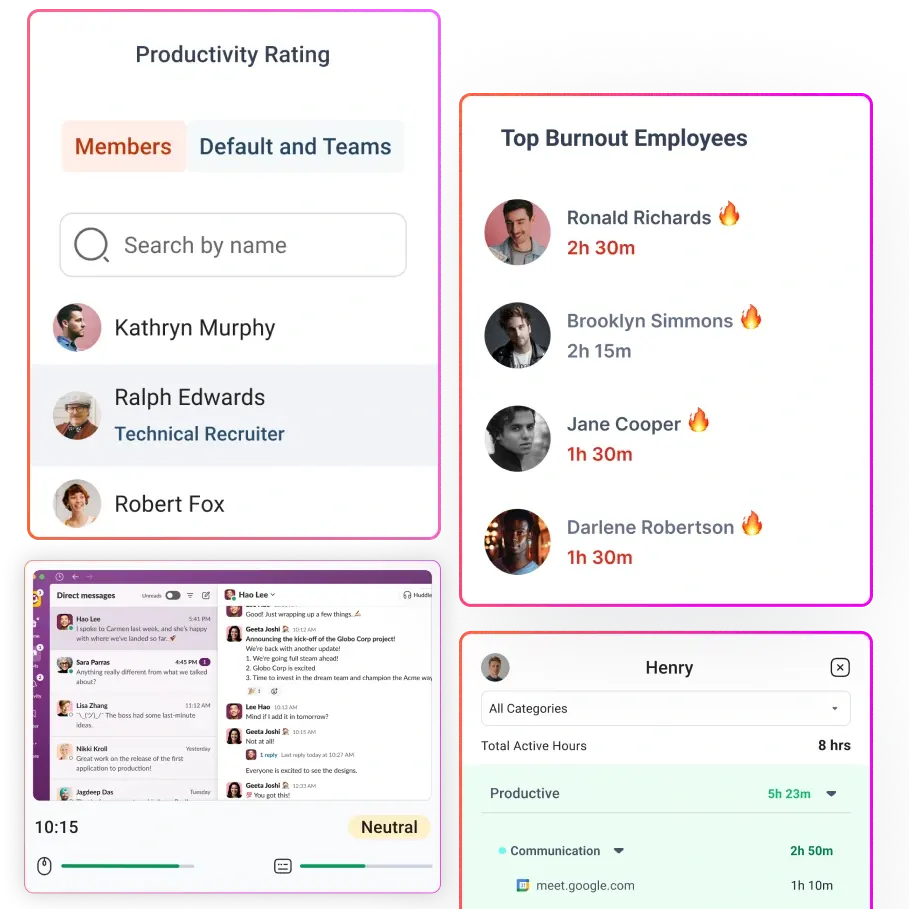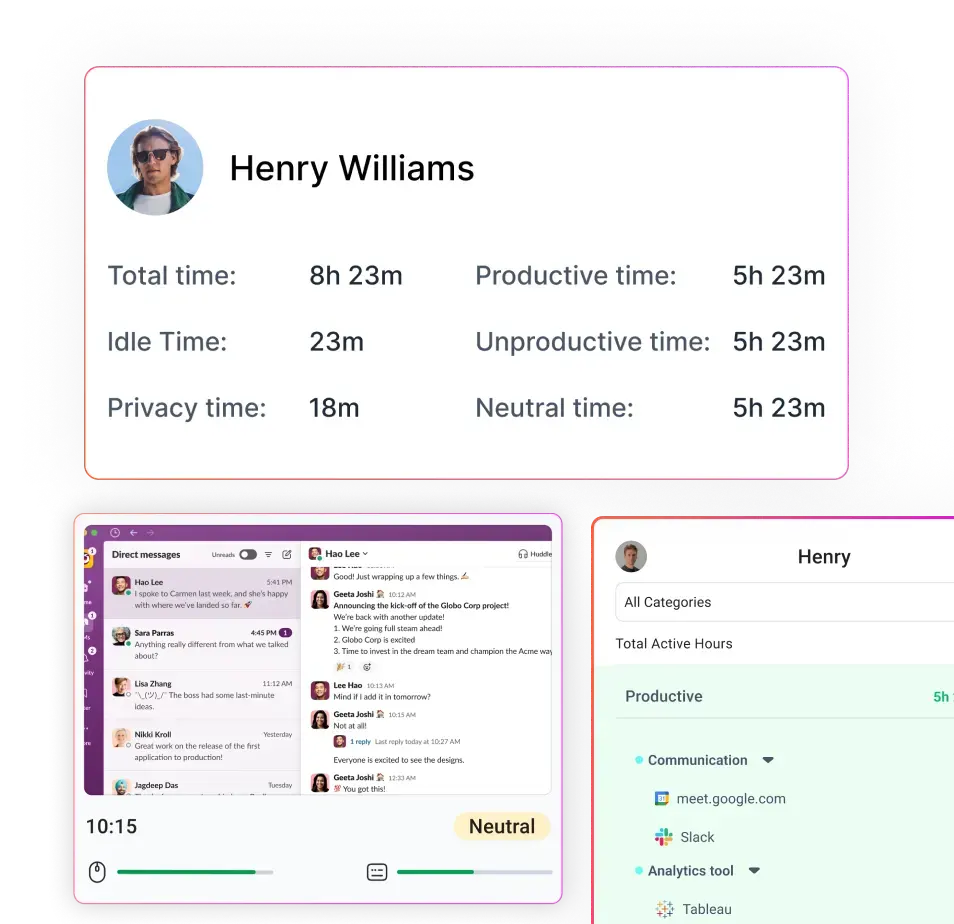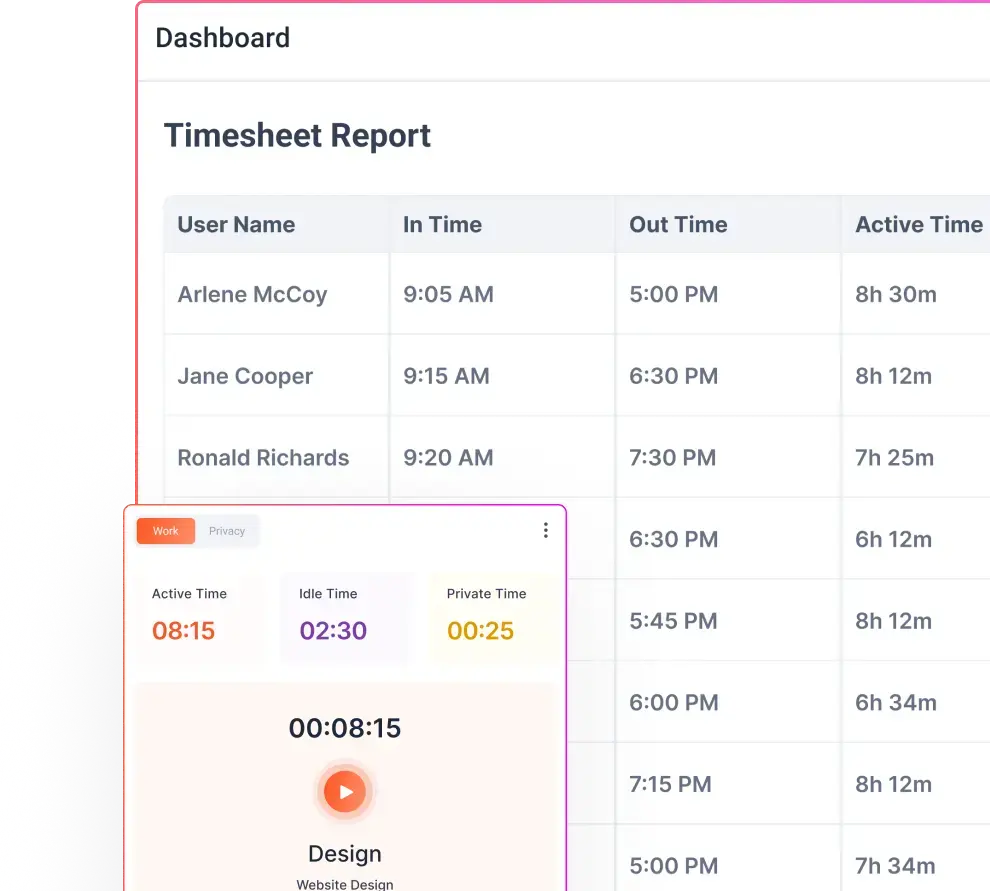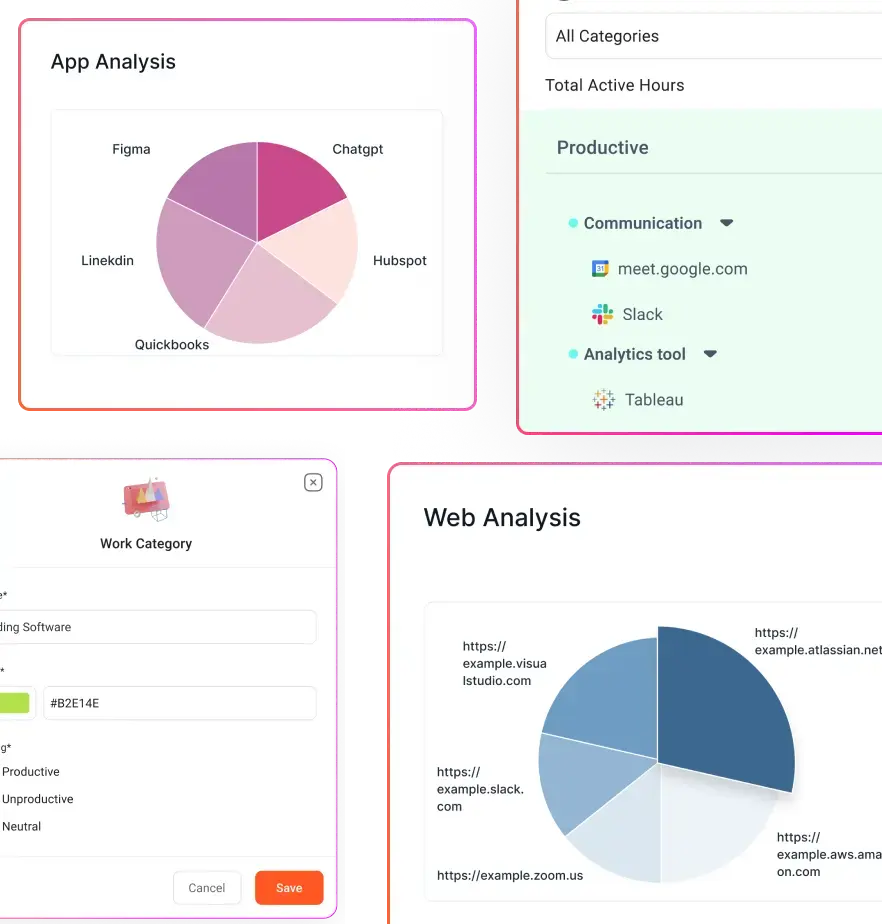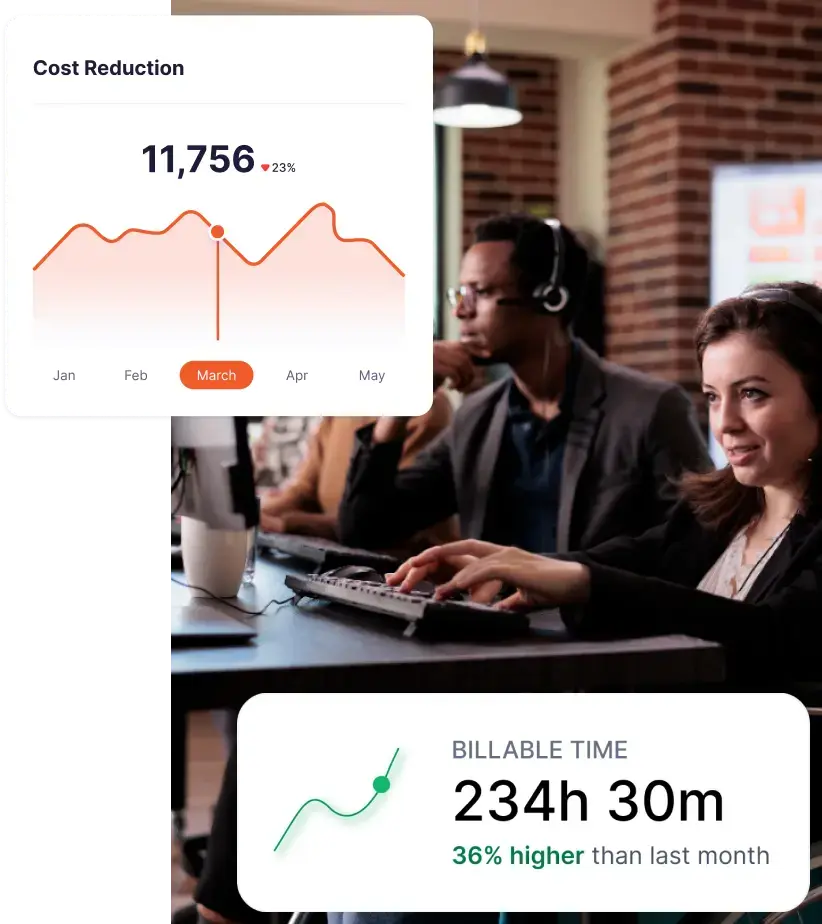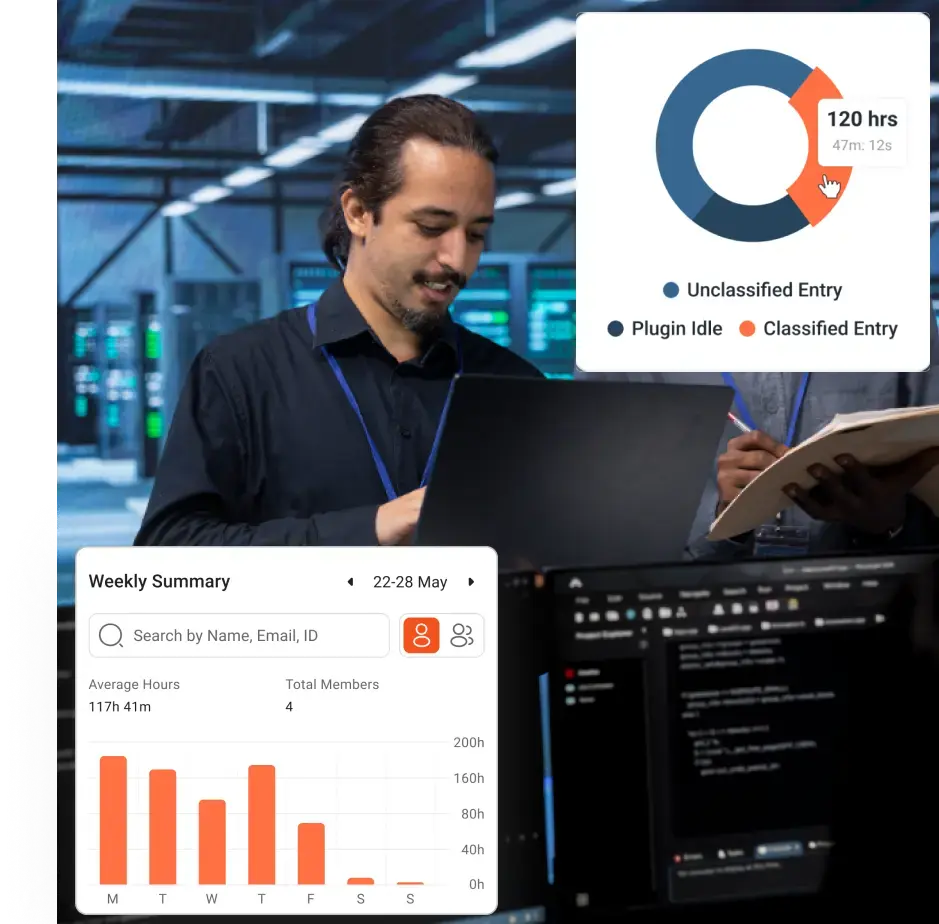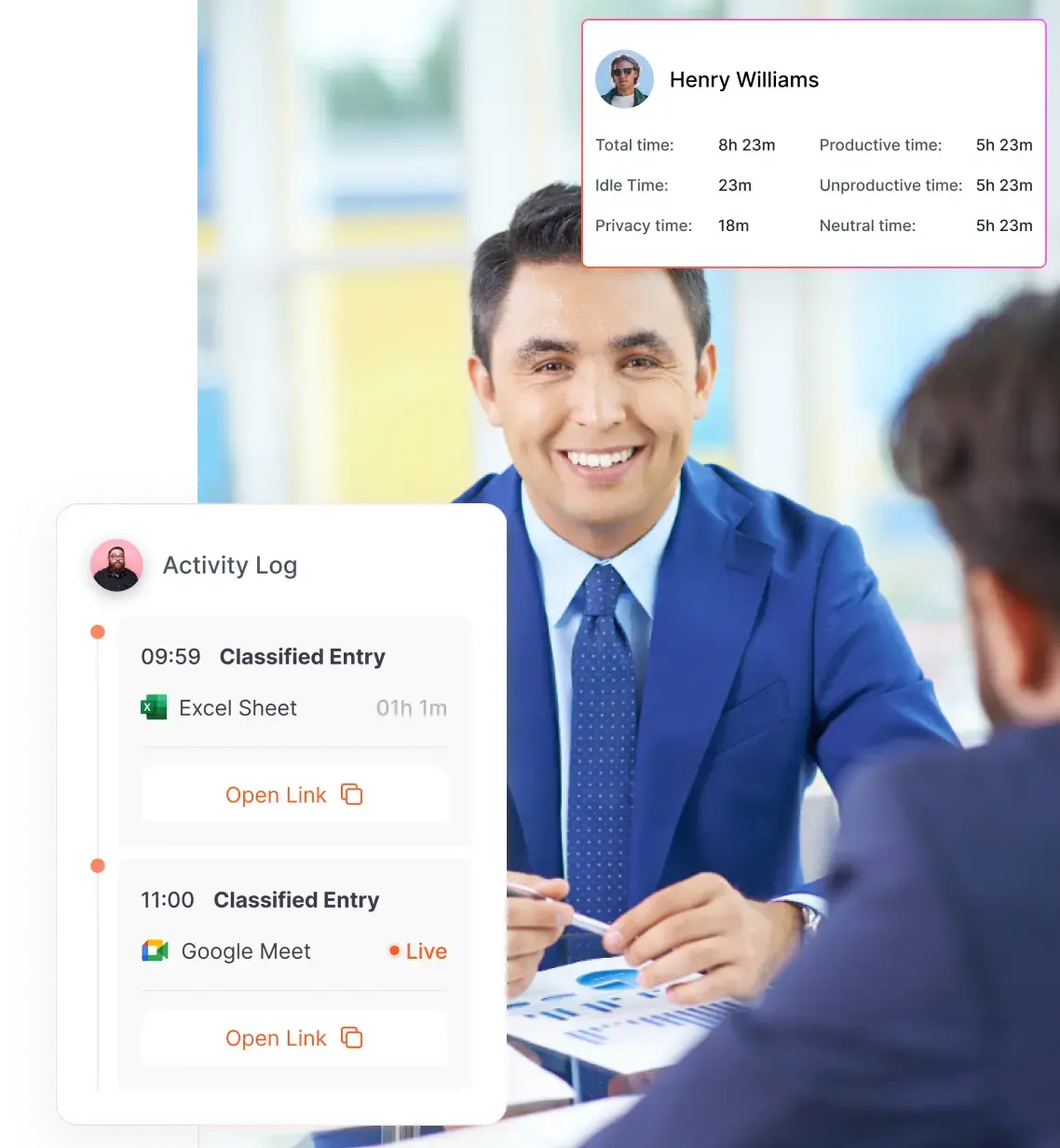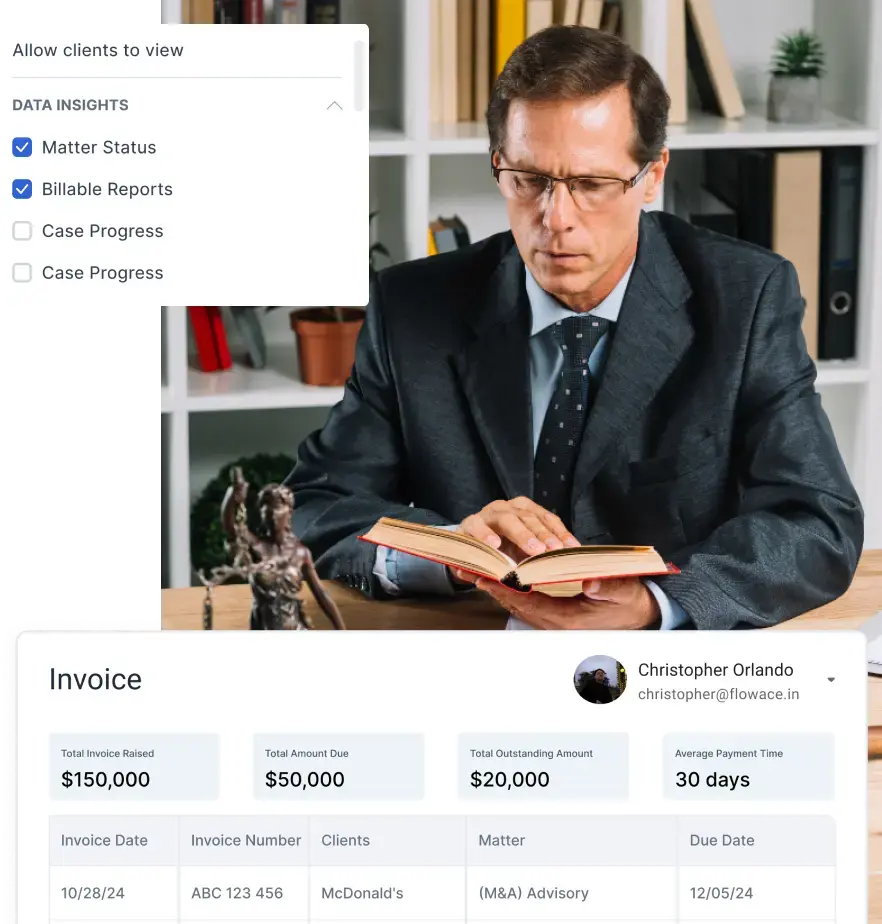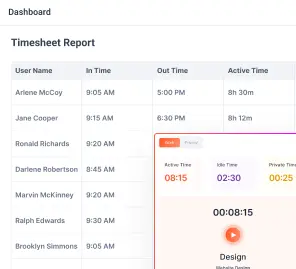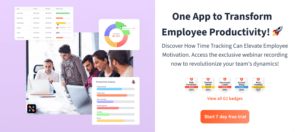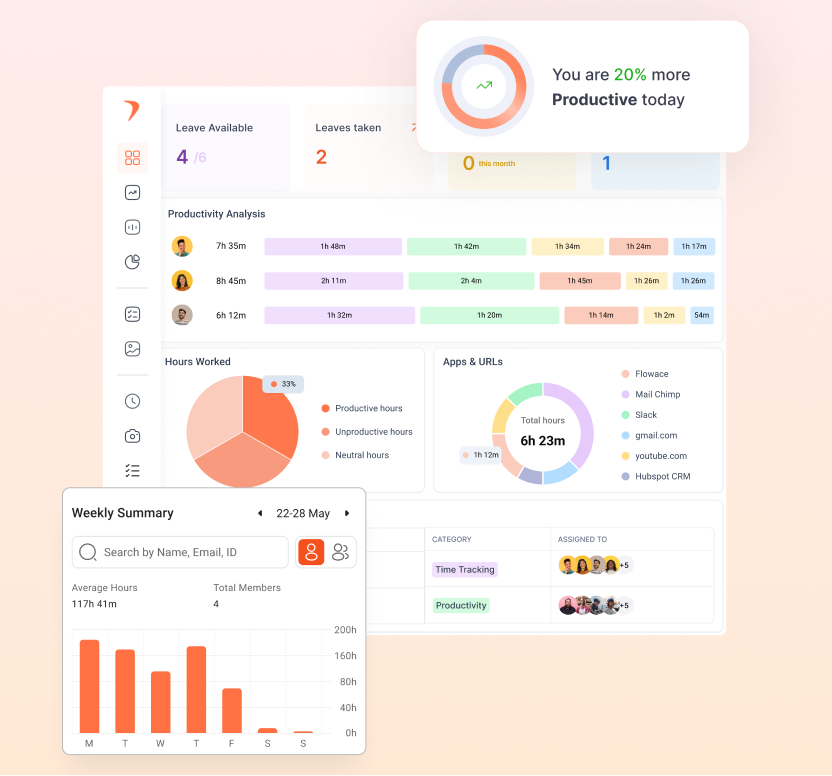TimeCamp has long been a go-to solution for businesses seeking simple and affordable time tracking. With features like automatic tracking, invoicing, and basic productivity reports, it meets the needs of many freelancers and small teams.
But as businesses grow, or as priorities shift, many users begin to feel the limits of what TimeCamp can offer.
That’s where Timecamp alternatives began to be searched.
Whether it’s the need for more accurate insights, deeper project tracking, better team management, or simply a more intuitive interface, there comes a point where you might find yourself looking for a more powerful or specialized alternative.
That’s exactly what this guide is here for.
Key takeaways:
- TimeCamp suits small teams but lacks depth for growing businesses needing advanced tracking and analytics
- Flowace leads as the best alternative, offering automated tracking and AI-driven productivity insights
- Evaluation focused on accuracy, usability, integrations, scalability, and support
- Each tool fits different needs, from freelancers (Toggl) to large teams (Insightful, Hubstaff)
- Flowace drives real results, boosting billable hours, focus, and overall team productivity
What is Timecamp?
TimeCamp is a cloud-based time tracking and productivity software built for freelancers, remote teams, and enterprises that want deeper insights into how work hours are spent. It automatically tracks time in the background, monitoring app and website usage to help users see where their focus goes throughout the day.
TimeCamp also supports manual entries, daily or weekly timesheets, and productivity classification, marking activities as productive, neutral, or unproductive. Its goal is to simplify time management while helping teams improve efficiency and accountability without micromanagement.
Beyond time tracking, TimeCamp offers project profitability analysis, invoicing, and attendance management features. Users can set budgets, track billable vs. non-billable hours, and even generate client invoices directly from tracked time data.
It also supports idle time detection, screenshot capture, and integrations with popular tools like Trello, Asana, and Slack.
With both free and paid plans available, TimeCamp strikes a balance between functionality and affordability, making it a practical solution for teams that want transparency, automation, and reliable performance tracking in one platform.
Why Do Users Choose Timecamp?
Users are often drawn to TimeCamp for its simplicity, intuitive interface, and rich feature set tailored to small to medium-sized businesses. It offers automatic time tracking, enabling users to monitor how time is spent across tasks, apps, and websites without much manual input.
This makes it particularly attractive to remote teams and freelancers who want to maintain productivity and accountability without the hassle of manual timesheets.
TimeCamp also integrates with popular project management and collaboration tools like Trello, Asana, Jira, and Slack, helping teams streamline their workflows. Its billable hours tracking and invoicing features are another major plus, especially for agencies and consultants who need accurate time logs to invoice clients.
On top of that, its reporting dashboard provides high-level visibility into team productivity and project progress, making it a useful tool for both employees and managers.
Our Methodology: How We Selected the Top TimeCamp Alternatives for 2025
TimeCamp has earned a strong reputation for time tracking and productivity measurement, but as business needs evolve, many teams are exploring tools that offer more automation, flexibility, and deeper insights.
Evaluation Criteria
To shortlist the best TimeCamp alternatives, we evaluated each tool across several key performance areas that matter most to modern organizations:
-
Time Tracking Accuracy & Insights – Does the software provide precise, real-time data that translates into better productivity and project visibility?
-
Ease of Use – Is the interface intuitive enough for both employees and managers to adopt quickly without disrupting daily workflows?
-
Integration Strength – Can it seamlessly connect with popular tools like project management, payroll, accounting, and collaboration platforms?
-
Privacy & Ethical Use – Does it promote transparency and trust while giving managers the insights they need?
-
Scalability & Flexibility – Can it grow alongside businesses of different sizes and work models, remote, hybrid, or office-based?
-
Support & Reliability – Does it provide strong customer support and a stable, dependable user experience?
Our team conducted thorough hands-on testing with each software, replicating real-world scenarios across remote, hybrid, and in-office teams. We analyzed dashboards, reporting accuracy, and automation features to see how well each platform enhances productivity while keeping time tracking simple and effective.
We also incorporated verified user feedback and expert opinions to ensure our recommendations reflect practical, real-world performance.
Why Do You Need to Look for Timecamp Alternatives?
While TimeCamp has its merits, there are several reasons why users eventually seek out alternatives. For starters, its user interface can feel outdated or clunky compared to more modern tools that focus on cleaner designs and smoother UX.
Many users report inconsistencies in automatic time tracking, leading to frustration when time entries need to be corrected manually.
Additionally, TimeCamp’s reporting features, though functional, can be limited in depth and customization, making it hard for growing teams or enterprises that require more robust analytics for decision-making. Another common concern is the lack of real-time productivity insights or behavior analytics, which some more advanced platforms now offer.
Furthermore, businesses scaling up often find TimeCamp’s feature set insufficient for larger teams that need more control, automation, or role-based access. Others may seek better customer support, stronger compliance capabilities (especially for finance or legal industries), or deeper integrations with niche tools.
Lastly, price-performance balance becomes a factor; users may find better value in tools that offer more advanced features for a similar or even lower cost.
For these reasons, many teams eventually explore more modern, scalable, or specialized TimeCamp alternatives that better suit their evolving needs.
Top Timecamp Alternatives for 2026
1. Flowace (Best Overall TimeCamp Alternative)
Flowace is more than just a time tracking software; it’s a complete work visibility and productivity optimization platform. Designed for modern, distributed teams, Flowace automates time tracking, generates insightful productivity reports, and eliminates the burden of manual timesheets.
Where TimeCamp simply tracks hours, Flowace gives you clarity into how those hours are spent, down to the app, website, or behavior—so you can optimize workflows, reduce time theft, and improve focus across your organization.
Key Features:
- 100% automated time tracking (no manual inputs required)
- AI-based productivity scoring per employee/team
- Idle time detection + auto break logging
- Smart nudges to reduce distractions and improve focus
- Auto-generated, editable timesheets
- Custom visual performance dashboards & detailed reports
- App & URL usage tracking
- Integration with Jira, Trello, Asana, Google Calendar, Slack, Zoom & more
- Employee wellness tracking and burnout prevention
Why It’s Better Than TimeCamp:
- No manual timesheets: Flowace automatically logs work without interrupting the user’s flow.
- Deeper productivity insights: TimeCamp offers time logs, but Flowace uses AI to analyze actual performance, engagement, and behavioral patterns.
- Smarter alerts: Nudges to take breaks, refocus, or log time help create healthier, more productive teams.
- Team visibility: Managers get a real-time dashboard of team performance and time usage.
- Designed for scale: Whether you’re 10 or 1,000 people, Flowace adapts to your needs.
Pricing:
- Starts at $1.99/user/month
- Volume discounts and custom plans for enterprises
- Free trial available with full feature access
User Ratings:
4.6/5 – G2
Ideal For:
Remote-first companies, hybrid teams, BPOs, IT services, agencies, HR and finance leaders, consulting firms
2. Toggl Track (Best for Freelancers & Small Teams)
Toggl Track is one of the most popular manual time tracking tools, known for its simplicity and intuitive interface. It’s often the first tool freelancers and startups try when they need to get a handle on where time is being spent. While it lacks automation or deep analytics, Toggl excels in visual simplicity and ease of use.
Key Features:
- Start/stop timers, manual time entries
- Calendar integrations
- Project, client, and task categorization
- Reports and dashboards
- Chrome & Firefox browser extensions
- Mobile & desktop apps
Pros:
- Extremely easy to use—perfect for beginners
- Beautiful UI with color-coded reports
- Lightweight and fast
- Supports billable hours and client invoicing
Cons:
- No automated tracking—everything must be manually started
- No productivity scoring or AI-driven insights
- Limited team performance monitoring
- No timesheet automation
Pricing:
- Free for up to 5 users
- Paid plans start at $10/user/month
- Business plan at $20/user/month adds audit logs and priority support
User Ratings:
4.6/5 – G2
“It provides insights into how I’m spending my otherwise non-tracked time. For example, meetings are on my calendar so I can see how much meeting time is spent each week. But, most other tasks (administrative, answering Slack, etc.) are not tracked, so this gives insights into how much time is being spent on those other categories and can help me better plan and forecast for future weeks. I also like that the clock ticker shows on the browser tab, even if i’ve navigated away from that task from within the tool.” – User on G2
Best For:
Freelancers, consultants, and very small teams who prefer manual control over automated insights
Note: If reporting gaps are slowing you down, explore these Toggl Track alternatives that offer richer analytics.
3. Harvest (Best for Invoicing + Time Tracking)
Harvest combines time tracking with invoicing and expense management. It’s an excellent option for client-facing businesses that need to log time, generate invoices, and get paid—all from the same tool. While it doesn’t offer the advanced productivity features of Flowace, it does shine in financial tracking and client billing.
Key Features:
- Time tracking (manual and timer-based)
- Built-in invoicing and payments
- Expense tracking and approval workflows
- Budget tracking for projects
- Timesheet approvals
- Integration with accounting tools (QuickBooks, Xero)
- Team reporting & capacity planning
Pros:
- Perfectly bridges time tracking and billing
- Clean UI and easy to onboard
- Built-in reminder system for time entries
- Strong integrations with project management tools
Cons:
- No automated time tracking
- Basic productivity insights
- Not suitable for organizations needing behavioral analytics
- Lacks AI-driven reporting
Pricing:
- Free for 1 user, 2 projects
- Paid plans start at $9/user/month
- No free trial on paid plan
User Ratings:
4.3/5 – G2
“I use it frequently in my daily work, and it is integrated with my employer management platform.” – User on G2
Best For:
Agencies, creative studios, consultancies, or any business billing clients by the hour
Note: If better integrations are a priority, discover these Harvest alternatives that easily connect with your workflows.
4. Clockify (Best Free TimeCamp Alternative)
Clockify is a freemium time tracking platform with generous features for small and growing teams. It covers the basics, time tracking, projects, tasks, and basic reporting, without overwhelming users. Though limited in automation or deep analytics, it’s hard to beat in terms of affordability.
Key Features:
- Manual and timer-based time tracking
- Projects, clients, and task categorization
- Timesheet submissions
- Team activity dashboards
- Optional screenshots & idle time detection
- Basic reporting and exports
- API and Zapier support
Pros:
- Fully free plan for unlimited users
- Simple UI and learning curve
- Offers time tracking + team management
- Low-cost paid plans unlock advanced features
Cons:
- Lacks intelligent productivity insights
- No automation for timesheets
- Not built for deep behavioral analysis
- Limited custom reporting unless on higher-tier plans
Pricing:
- Free forever for unlimited users
- Paid plans from $5.49/user/month (Basic) to $11.99/user/month (Enterprise)
User Ratings:
4.5/5 – G2
“The best thing is how simple and effective it is for tracking time without any unnecessary distraction. It’s super helpful, so whether you’re logging hours for work, personal projects, or just staying on your productivity, it’s easy to use. Also, the reports and insights are areally very good! They make it so much easier to see where your time is going and find ways to improve and also reports are just awesome.” – User on G2
Best For:
Budget-conscious teams, startups, and small businesses with basic tracking needs
Note: Finding Clockify’s reports too basic? You might like these Clockify alternatives with advanced analytics.
5. RescueTime (Best for Personal Focus & Distraction Blocking)
RescueTime focuses on improving individual productivity by analyzing time spent on digital activities and helping users manage distractions. It’s less about team performance and more about personal focus coaching. It auto-categorizes tasks as productive/unproductive and provides daily goals and nudges.
Key Features:
- Automatic time categorization (productive vs. unproductive)
- Real-time distraction alerts
- Focus sessions & daily goal setting
- Deep analytics on app and website usage
- Personal productivity scores
- Email reports and weekly summaries
Pros:
- Great for improving self-awareness
- Excellent UI with focus-oriented dashboards
- Daily coaching to build better habits
- Fully automatic tracking
Cons:
- Not built for team visibility or management
- No client or project billing
- Limited admin controls
- Doesn’t generate timesheets
Pricing:
- Free basic plan
- Premium at $12/month
- No team plans
User Ratings:
4.2/5 – G2
“RescueTime runs in the background and automatically records the time I spend on numerous apps and websites, giving me a clear view of my daily behaviors. This helped me focus on what mattered and avoid distractions. The ability to create alarms when I spend too much time in non-productive activities has been a good reminder to stay focused. When I have multiple projects and tight deadlines, the Focus Time option helps me avoid distractions and focus on my vital work.” – User on G2
Best For:
Solo professionals, remote workers, and individual contributors seeking to improve personal focus
Note: Prefer the same distraction management but with team reporting and billing? Check out RescueTime alternatives built for collaborative environments.
6. Insightful (Best for Employee Monitoring + Workforce Analytics)
Formerly known as Workpuls, Insightful is designed for companies needing deep visibility into how employees spend their time. It offers detailed monitoring features including screenshots, app tracking, and productivity scores. If your business needs robust compliance, performance evaluation, or security-driven tracking, this is the tool for you.
Key Features:
- Employee activity tracking (apps, websites)
- Screenshots at intervals
- Time tracking with productivity classification
- Automatic time mapping to projects
- Remote team oversight
- Attendance, shift scheduling, and alerts
- Real-time dashboards
Pros:
- Excellent monitoring capabilities for large teams
- Deep behavioral analytics
- Helps enforce security and compliance
- Optional stealth mode for invisible tracking
Cons:
- Employees may feel monitored or micromanaged
- Steeper learning curve for setup
- Expensive for small businesses
- No invoicing or client billing features
Pricing:
- Employee Monitoring: from $6.40/user/month
- Custom pricing for enterprise deployments
User Ratings:
4.6/5 on G2
4.7/5 on Capterra
“Insightful is a platform with a highly user-friendly, intuitive interface that is easy to master, allowing users to begin using it efficiently from the very first moment. Its support team provides immediate assistance and offers a comprehensive knowledge base, enabling IT administrators to deliver effective support and customize the platform according to specific needs.” – User on G2
Best For:
Large enterprises, compliance-heavy industries, IT teams, call centers
Note: If Insightful’s pricing or feature set feels overwhelming for your team’s needs, you might want to explore these Insightful alternatives with a simpler, more budget-friendly approach.
7. Hubstaff (Best for Remote + Field Teams with GPS)
Hubstaff combines time tracking with GPS tracking, productivity monitoring, and payroll management. It’s ideal for companies managing remote or mobile workforces, such as field service teams, contractors, or agencies. With optional screenshots and task tracking, it offers a comprehensive solution for visibility and payroll.
Key Features:
- GPS location tracking (mobile app)
- Automated time tracking with activity levels
- Screenshots and productivity monitoring
- Team scheduling and attendance
- Payroll integrations and invoicing
- Client/project tracking
- Trello, Jira, Asana, QuickBooks integrations
Pros:
- Built for field service and remote team visibility
- In-depth payroll and budgeting features
- Geofencing and mobile monitoring tools
- Great for time and activity accountability
Cons:
- UI feels dated
- Monitoring may feel invasive for creative teams
- No advanced productivity coaching or automation
- More setup effort than plug-and-play tools
Pricing:
- Time Tracking: from $4.99/user/month
- Premium plan: $25/user/month
- Enterprise with SSO, custom limits available
User Ratings:
“I really like how easy Hubstaff makes it to track time without overcomplicating things. The desktop app runs smoothly in the background and gives me accurate logs of what I worked on. The screenshot feature is helpful for transparency with clients, and the reporting tools give me a clear picture of where my time goes. It’s also great that it integrates with tools I already use, so I don’t need to constantly switch between platforms.” – User on G2
Best For:
Field service companies, distributed agencies, remote contractors, and businesses managing mobile employees
Note: If Hubstaff’s monitoring style feels too rigid for your work culture, consider trying out Hubstaff alternatives that offer more flexibility.
Why Flowace is the Best TimeCamp Alternative
When it comes to time tracking and productivity monitoring, Flowace stands out as the top alternative to TimeCamp, offering everything TimeCamp does and so much more.
While TimeCamp focuses primarily on basic tracking and invoicing, Flowace takes a broader, more intelligent approach.
It combines automated time tracking, deep productivity analytics, AI-driven insights, and real-time team visibility, helping businesses not only measure time but optimize how it’s spent.
For companies that are scaling fast or want to drive performance at every level, Flowace becomes a strategic asset, not just a time tracker.
Unlike TimeCamp, which often requires manual corrections or user input to maintain accuracy, Flowace automates most tracking in the background, eliminating the need for constant manual check-ins. It captures app usage, idle time, screen activity, and even break periods, while respecting employee privacy.
This level of insight helps managers understand not just what’s being done, but how efficiently and sustainably it’s being done. You also get custom reports, client billing logs, goal tracking, and project-level visibility all in one intuitive dashboard.
Plus, Flowace integrates with all your favorite tools, Slack, Jira, Asana, Zoho, and more, so your workflow stays uninterrupted.
Real-world teams are seeing the difference. Take, for example, a fast-growing digital agency that switched from TimeCamp to Flowace.
Within a month, they reported a 23% increase in billable hours, a drop in employee burnout, and sharper forecasting accuracy across client projects.
Or a SaaS startup that used Flowace to identify hidden time leaks and recovered nearly 12 hours a week across the team, translating into higher output without longer workdays. These aren’t just productivity metrics; they’re real business results.
If you’re ready to move beyond basic tracking and into smarter, more empowering time management, Flowace is your next step.
Start your free trial today, book a personalized demo, or reach out to our team. We’ll help you find the perfect setup for your team’s unique workflow.


